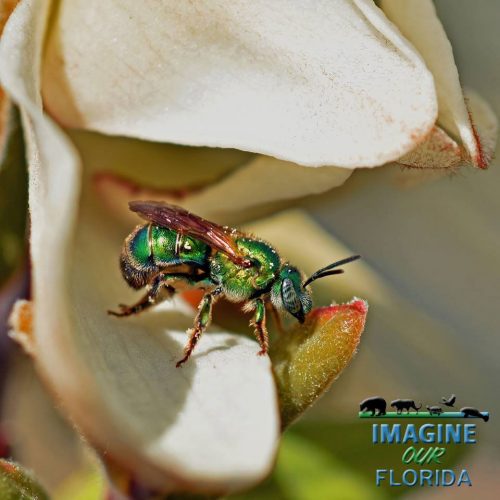Sweat Bees (Halictidae) are also known as Halictid Bees. They vary greatly in appearance. The majority are dull to metallic black, with the remaining species being metallic green, blue or purple. These bees do not sweat; they are attracted to human sweat. These non-aggressive Bees use the salt from human sweat for their nutritional needs. Sweat bees are important pollinators for many wildflowers and crops, including stone fruits, pears, and field crops. Halictids typically nest in bare soil located in a sunny location. Most halictids nest underground, but some will nest in rotting wood. The bees help speed the decay and decomposition of deadfall trees. In the spring or summer, the female mates. She then begins digging a nest and providing cells with pollen and nectar. Cells containing an egg or larva are lined with a waxy substance, which is extruded from a gland on the underside of the bee’s abdomen. In each cell, a single egg is laid. When the larva hatches, it eats the pollen provided. Once that is eaten, it must become self-sufficient and find its own food source. Males will usually resemble the female of the same species, but the male sweat bee does not have an area of long, dense hairs on its hind legs used for carrying pollen. They may have a yellow spot below the antennae on their face. As these bees feed on nectar and pollen, they are pollinating in the process. These technicolor bees do add a flash of brilliance to a spring garden.

